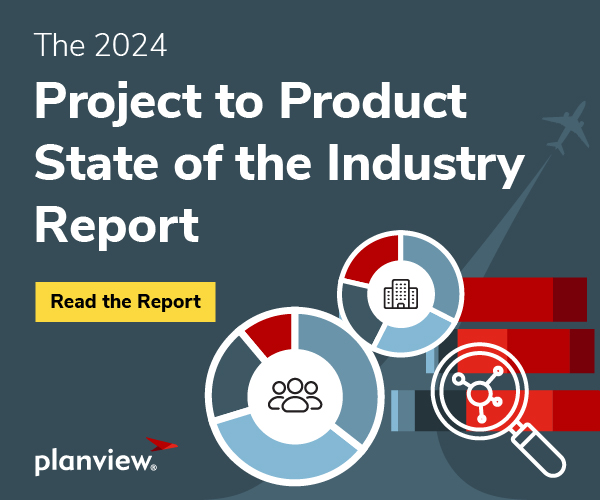
When Dr. Mik Kersten published Project to Product – a groundbreaking book that introduced the Flow Framework® in 2018 – the term “product operating model” was relatively new.
At the time, many leading software companies already knew how to organize people through a product-oriented mindset. Among other practices, they supported persistently funded, cross-functional teams led by product managers to iteratively deliver value.
Results like higher productivity and faster time to market made this emerging concept of a product operating model catch fire and grow.
Fast-forward to today, when software development is part of every company’s portfolio, and the proliferation of AI tools turns the delivery expectation from fast to blistering. More companies – not just tech – are adopting a set of structures and practices best suited to delivering value in this way.
These structures and practices are called the “product operating model.”
What was once considered the management system for software companies is now becoming the new standard for traditional organizations.
Adopting a product mindset makes sense. According to one study, over 50% of the work in elite and high-performing organizations is product-oriented, compared to only 25% of low performers.1
Business and technology leaders predict that the project-to-product shift will continue to expand within their organizations, lasting into the next five years and beyond.
- In a CIO study conducted by Gartner®, the respondents showed that: “They expect to continue moving more toward this model, indicating that they expect 70% of their work to use a product-based delivery model in five years.”2
- Accordingly, 50% of respondents who contributed to Planview’s 2024 Project to Product State of the Industry report predict that 80% of their work will be product-oriented in five years.
What is a Product Operating Model?
The product operating model is a set of management structures, information, and processes for effectively planning and controlling digital product development.
A product operating model ensures that all teams work together efficiently to deliver value to customers and meet business objectives.
It’s characterized by empowered product teams, customer-centric practices, value stream-based organization, outcome-driven metrics, and sustainable funding models. This model prioritizes business value and customer outcomes over traditional output metrics.
Watch Next: Dr. Mik Kersten’s P2P Summit presentation “Five Steps to a Product Operating Model“
3 Reasons to Consider a Product Operating Model
Adopting a product operating model can help your organization thrive for many reasons – and these are some of the most important.
A product operating model is better for the bottom line.
Our latest research uncovered that elite organizations – defined as those that meet their quarterly business objectives more than 90% of the time – are twice as likely to drive better business performance than low-performing organizations that meet their quarterly business objectives less than half the time.
This finding correlates with McKinsey’s research on the topic: “Organizations with high product operating model maturity across geographies and industries have 60% higher returns to shareholders and 16% higher operating margins than bottom-half performers.”3
There’s a strong correlation between product-oriented work and high performance, and much of that begins by measuring the right things.
Read Next: Why Product Operating Models Work: Insights from McKinsey & Company
A product operating model supports business-oriented metrics, reporting, and outcomes.
Typically, one of the hurdles that lower-performing organizations face isn’t a lack of measurement — it’s an overemphasis on outputs over outcomes.
For example, many companies’ standard measurement is the output-based “iron triangle” of time, resources, and deliverables. While those metrics have their place, they tend to disconnect teams, leaders, and stakeholders from the value they’re delivering, which can indicate lower performance.
Here’s what the data shows: Elite-performing organizations are three times as likely to use cascading objectives and key results (OKRs), according to our survey results. They’re also twice as likely to regularly review Flow Metrics®, which measure the efficiency and effectiveness of work as it moves through a value stream.
Plus, according to Gartner: “The top 20% most effective organizations are 3.2 times more likely to use product teams that are measured on business outcomes compared to those who do not.”
By shifting focus from outputs to outcomes, organizations with product operating models aren’t just measuring differently – they’re fundamentally transforming their ability to deliver measurable value to the customer.
Watch Next: The Evolution of the Product Operating Model in the Age of Generative AI
A product operating model increases customer centricity.
A product operating model elevates practices like customer centricity in many ways. One of the most significant is that product-oriented organizations trade silos for cross-functional teams. These teams emphasize not only improving the flow of improvements to the customer but also amplifying and shortening customer feedback loops.
Our data shows that elite organizations, which have the highest concentration of product-oriented work, also rank higher than low performers in customer centricity.
- They’re three times more likely to measure customer value.
- They’re twice as likely to be customer-centric, actively maintaining stronger relationships between their employees and customers.
- They’re twice as likely to be conscious of how optimizing flow improves customer experience.
What’s more, McKinsey found that top-quartile Operating Model Index companies overall have 38% higher customer engagement and 37% higher brand awareness, showing a link between product-oriented practices and positive customer outcomes.3
Watch Next: Unlearn What You Know: Stop Thinking Like a Coach and Start Thinking Like a Player and learn the secrets to driving project-to-product change.
Thriving in the Digital Age
While there are many reasons for adopting a product operating model, these three are some of the most compelling: A product operating model drives the right results (bottom-line growth), enables organizations to measure the right things (outcomes over outputs), and orients them around with the right work (customer value).
In my view, it’s the business operating system that companies need to thrive in the disruptive Digital Age.
Go Deeper
Uncover the eight key areas where elite organizations excel. We analyzed survey results from more than 600 participants and looked at 8,000 value streams to define the criteria for a high-performing, product-oriented organization. Read the 2024 Project to Product State of the Industry report to benchmark your organization and learn the eight traits you need to excel in implementing a product operating model. View the Executive Summary or Get the Full Report
Sources
12024 Project to Product State of the Industry Report. Published on Oct. 1, 2024, by Planview, this report uncovers a research-led approach to transforming and sustaining top-performing product-oriented organizations.
2Gartner, Leadership Actions for a Successful Project-to-Product Transition, By Christie Struckman, Brandon Germer, 18 September 2024. GARTNER is a registered trademark and service mark of Gartner, Inc. and/or its affiliates in the U.S. and internationally and is used herein with permission. All rights reserved.
3Chawla, Aditi, Martin Harrysson, Hannah Mayer, and Megha Sinha. 2023. “The Bottom-line Benefit of the Product Operating Model.” McKinsey & Company. December 19, 2023. Accessed November 3, 2024.




